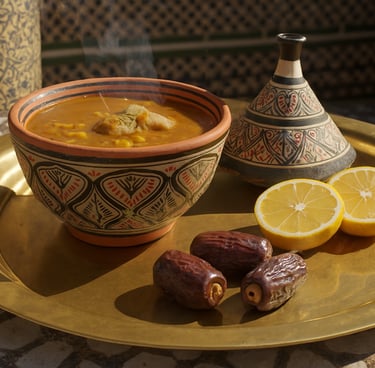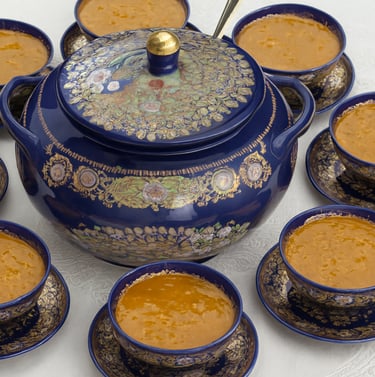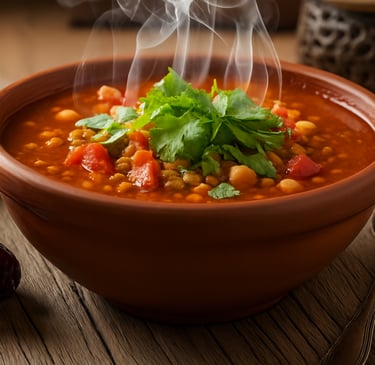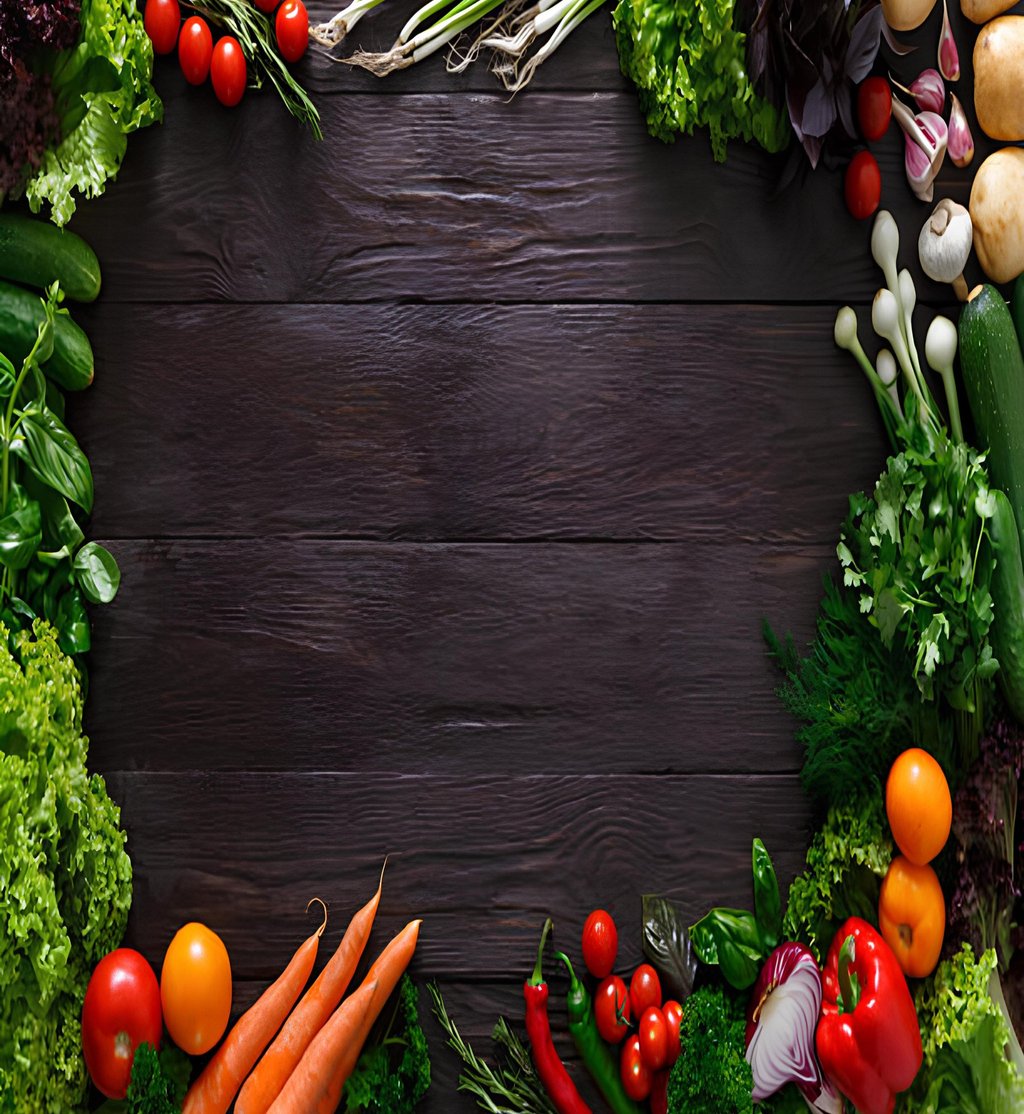

authentic Moroccan harira soup









Harira is a traditional Moroccan soup that is a cornerstone of the Iftar meal during the holy month of Ramadan. It's a rich, hearty, and aromatic soup made from a base of tomatoes, chickpeas, and lentils.More than just a dish, Harira is a symbol of warmth and family gatherings. It is a comforting and nourishing way to break the fast at sunset.




250 g (½ lb) lamb or beef, cut into small cubes (optional, can be made vegetarian)
3 tbsp olive oil
1 onion, finely chopped
2 celery stalks with leaves, finely chopped
2 tomatoes, peeled and grated (or 200 g canned tomato puree)
2 tbsp tomato paste
Legumes & Grains:
150 g (¾ cup) dried chickpeas, soaked overnight (or 1 can, drained)
100 g (½ cup) dried lentils, rinsed
2 tbsp rice (short-grain or broken rice) or 50 g vermicelli noodles
Herbs & Spices:
½ bunch fresh parsley, finely chopped
½ bunch fresh cilantro, finely chopped
1 tsp ground turmeric
1 tsp ground ginger
½ tsp ground cinnamon (optional)
1 tsp black pepper
1 ½ tsp salt (adjust to taste)
Thickener (Tedouira):
100 g (¾ cup) all-purpose flour
250 ml (1 cup) water, whisked to a smooth paste
Liquid:
2 liters (8 cups) water or light broth
Ingredients
Instructions


Cook the base
In a large pot, heat olive oil. Add onions, celery, and meat (if using). Sauté until lightly browned.
Stir in grated tomatoes, tomato paste, parsley, cilantro, and all spices. Cook 5 minutes.
Add legumes
Add chickpeas, lentils, and water/broth.
Bring to a boil, then reduce heat. Simmer uncovered for 1 hour (until chickpeas begin to soften).
Thicken the soup
Whisk together flour and water to make the tedouira. Slowly pour into the soup while stirring to avoid lumps.
Continue simmering for 15 minutes until the soup thickens.
Add rice or vermicelli
Stir in rice (cook 20 minutes) or vermicelli (cook 10 minutes). Adjust consistency by adding more water if too thick.
Taste and adjust
Season with extra salt or pepper if needed. Harira should be velvety and slightly tangy from the tomatoes.
Serve
Serve hot with lemon wedges and dates on the side. Traditionally eaten with chebakia (honey-sesame pastries) during Ramadan.


